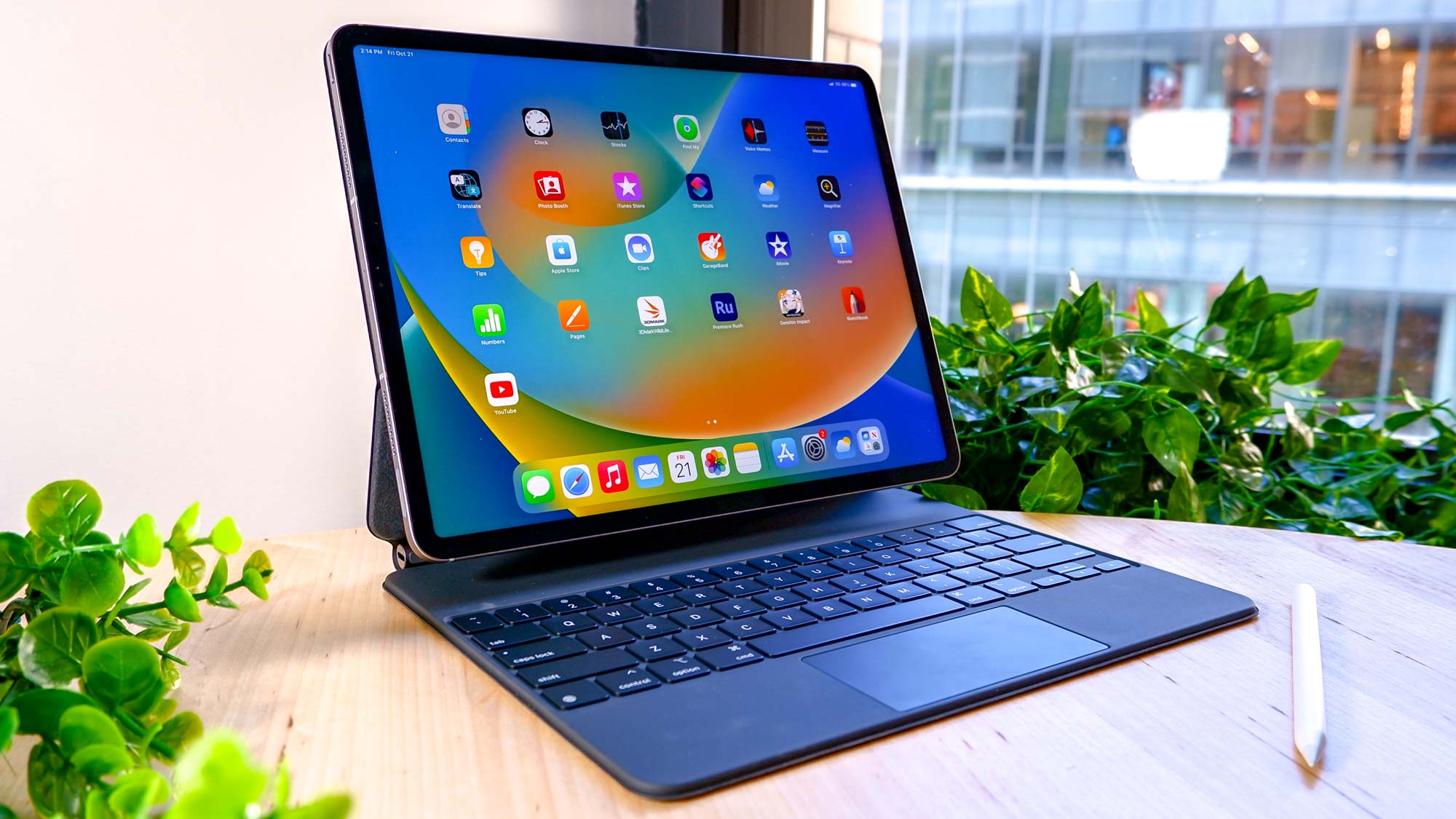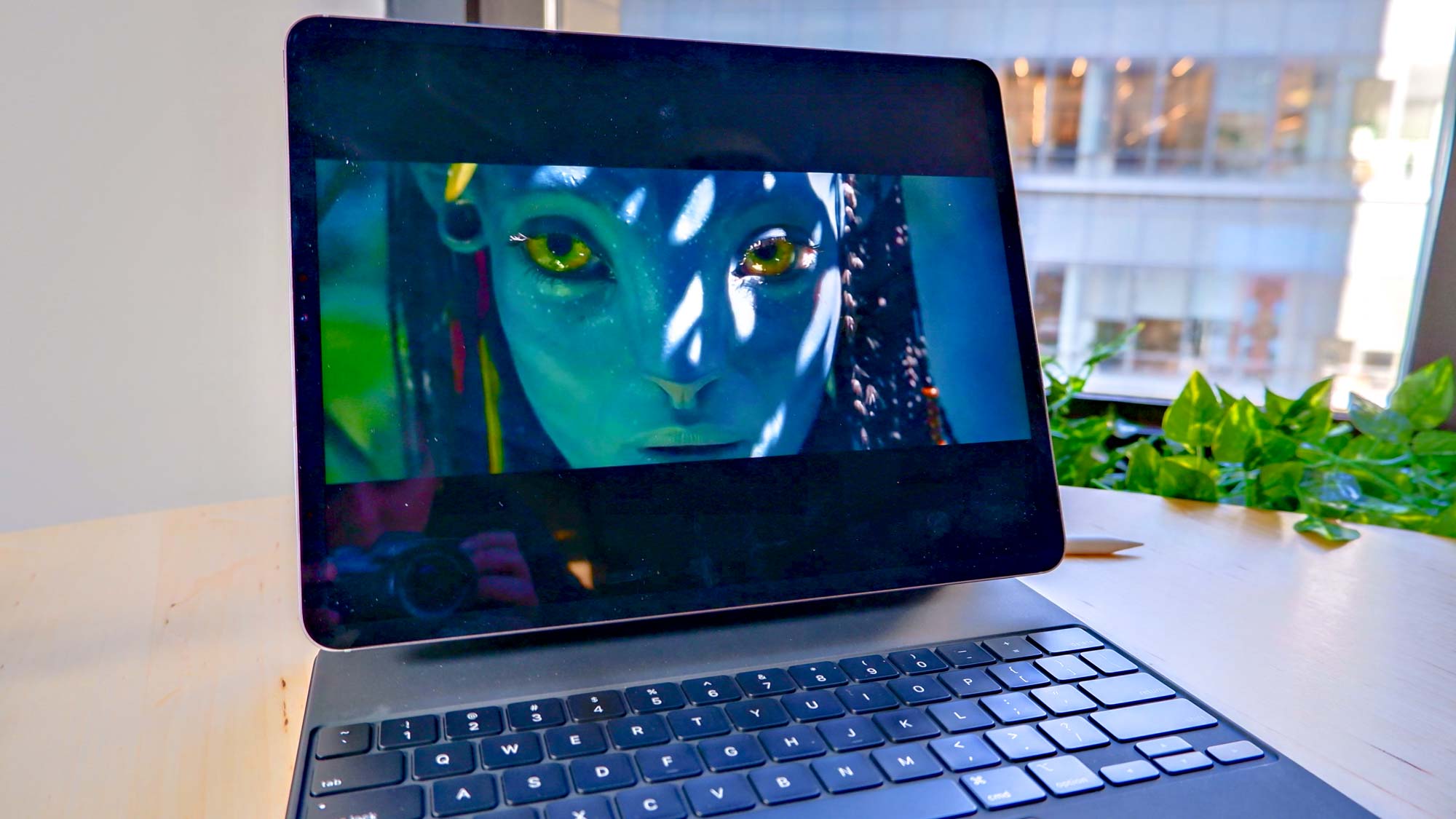
The next-generation iPad Pro could come with an eye-watering price tag if it does indeed adopt OLED panels and bump the screen size to 13 inches.
A report by The Elec claims that moving from mini-LED displays, found on the current iPad Pro 2022, to OLED panels will see a procurement price increase of two to three times for Apple. And as a result that will likely have a big impact on the final price of an OLED-equipped iPad Pro.
Now the iPad Pro models have never been cheap, offering a distinct specs advantage and a 120Hz display over their Air and vanilla siblings. But going OLED could see the price of a 13-inch iPad Pro hit $1,800; that’s MacBook Pro-level money.
This is based on speculation by tech tipster Revegnus on Twitter, who has yet to establish the most reliable reputation.
OLED iPad panels price:11-inch $27013-inch $350Finished OLED iPad price:$1500 for the 11-inch model and $1800 for the 13-inch model. pic.twitter.com/kBdVqE9Q11April 27, 2023
But some math by our sibling publication Laptop Mag comes to the same conclusion and cites that the way Apple has a reported 50% markup for producing its tablets to selling them, could see OLED-equipped iPad Pros jump in price by some $500 to $700.
So we’d be looking at the rumored 11-inch next-gen iPad Pro starting at $1,500 and the 13-inch model beginning at $1,800. Add in accessories like a Magic Keyboard and Apple Pencil and you’re looking at an overall price that hits or exceeds $2,000; that’s frankly an absurd amount of money for a tablet.
OLED iPad Pros: exciting or excessive?
Now it’s worth bearing in mind that these numbers are all speculative, and there’s a good chance Apple could price its next-gen iPad Pros more competitively. But Apple can seemingly charge what the heck it wants for its products and still see them sell well. So a $1,800 iPad Pro is well within the realm of imagination.
Would it be worth it? That’s the question.
Well, the current iPad Pro models with their mini-LED displays are very impressive, providing a screen that's more than capable of editing images on, in addition to watching movies or playing games. But OLED displays are still, arguably, the gold standard for screen tech, offering fantastic colors and contrast, with the ability to daily ‘true blacks.’

Having used the Samsung Galaxy Book 3 Pro 360 for a bit, I can attest that having an OLED-equipped machine is fantastic, with everything looking richer and more vibrant compared to the screens of other laptops and 2-in-1 machines I’ve used.
There are drawbacks to OLED, with burn-in still being a potential issue, and they can consume a lot of battery power when on devices larger than smartphones. But Apple would likely work pretty hard to ensure that the OLED panels it may use on the next-gen iPad Pros are as efficient as possible; Apple rarely lets us down when it comes to device battery life, so it has form for extracting power efficiency.
Such technical expertise would likely come at a price and thus be another reason for potentially high prices for an OLED iPad Pro.

For content creators who want the flexibility of a tablet with some of the capabilities of a laptop, an OLED iPad Pro could be exactly what they are after. The same could be said for iPad fans who really want the very best a tablet can offer.
For others, a super-expensive OLED iPad Pro could be a step too far, given many would not likely complain about the screens on the current iPad Pros.
OLED iPad Pros have been generally tipped to arrive in 2024, so there’s still a lot of scope for change in terms of new manufacturing techniques to lower the cost of panel production. In the meantime, the biggest iPad changes are likely to arrive at WWDC 2023, where we’re expecting to see the debut of iPadOS 17, which could usher in a suite of tweaks and upgrades to Apple’s tablet operating system; here’s hoping it makes the iPad Pro even more capable of being a laptop alternative.







